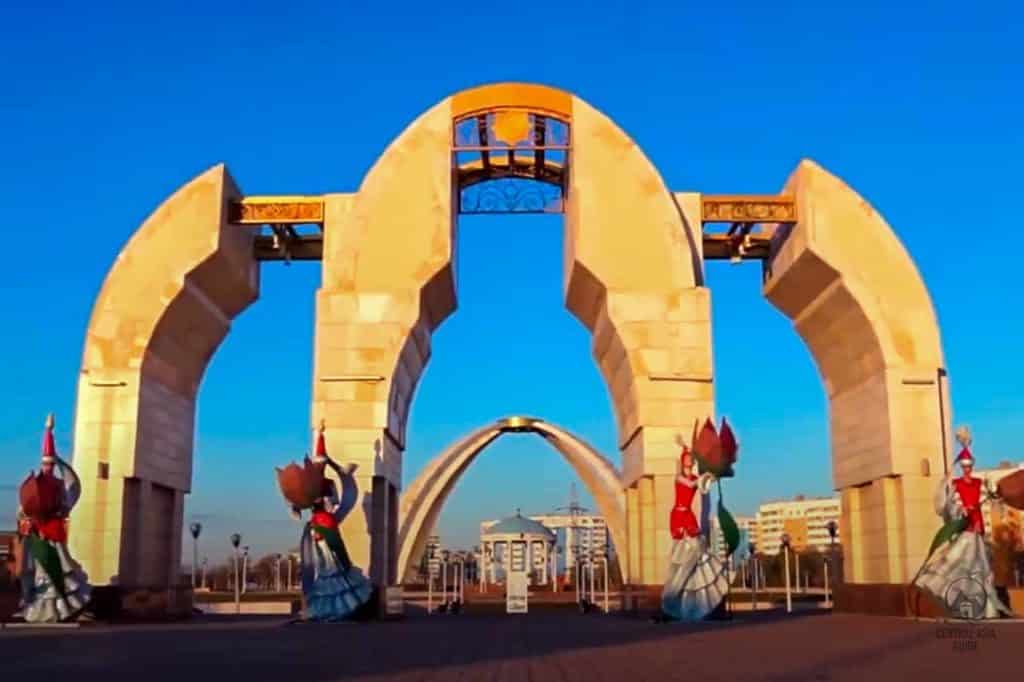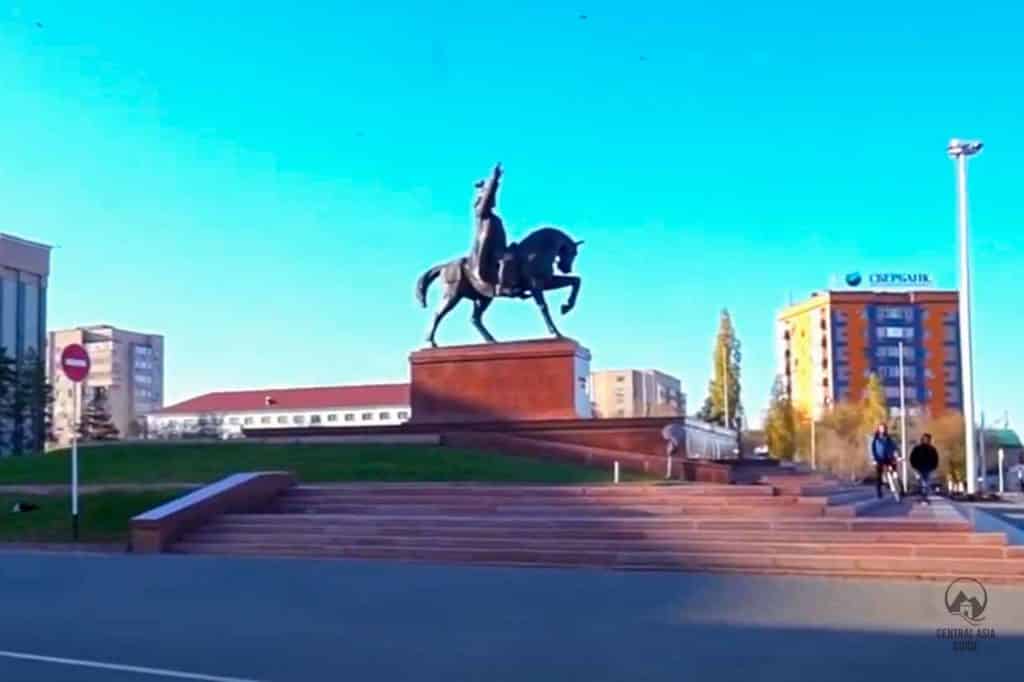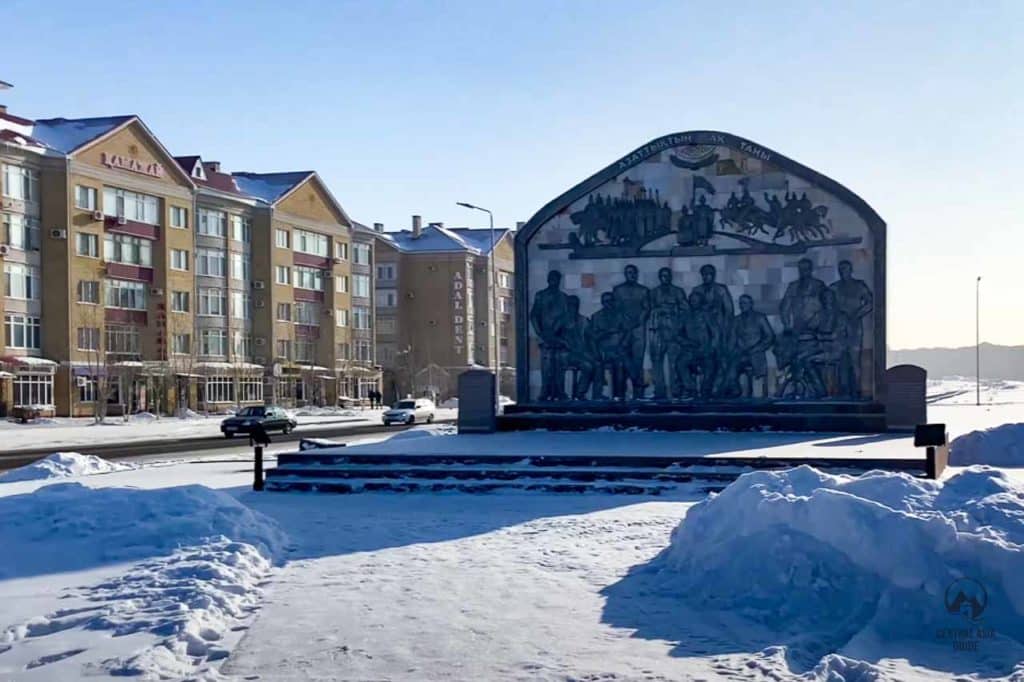Aktobe
Aktobe
Aktobe is situated in the south of the southern end of the Ural Mountains, in the remotest eastern corner of Europe. It is an industrial city placed the left bank of the Ilek River a left branch of the Urals, in the central part of the under the Uralsk plateau in the plain 250-400 meters high. The city placed in the north-west borders on the Martuk district of Aktobe region, in the northeast with Kargalinsky district, in the east borders with Khromtau district and in the south and south-west with Alga district.
The region of Aktobe is huge, stretching from the Ural mountains on the Russian border in the north and the Kyzylkum desert of Karakalpakstan in the south. The region’s advantage is the geographical location, being at the junction of Europe and Asia. Caravans of the Great Silk Road passed through this land uniting cities and countries. The modern map of the region is crossed along and across by highway lines, the largest in Western Europe – Western China global transport corridor. Railway lines stretch in all directions, both to the European and Asian parts of the Eurasian continent. Besides, the sky is covered by a network of international airways, almost all airlines in the world use the services of an ultra-modern regional air navigation dispatch center.


Before the arrival of Russian power, the current Aktobe region was ruled by the Kazakh Horde. The most popular rulers of ancient times are Eset Batyr and Abulkhair Khan. Like many other cities on the Russo-Kazakh border, Aktobe began as a Russian military fortress, on the strategic confluence of the Kargala and Ilek rivers, within the Kazaly-Orenburg caravan route. By the arrival of a railway connection on the Orenburg- Tashkent line, Aktobe developed as an important spot. Aktobe was founded in 1869 as a Aktobe fortress (White Hill) to defend the Russian Empire. During the first three decades after its establishment, the economic life of Aktyubinsk was closely related to the nomadic cattle breeding. At the same time, the population settled around the village. The fertile soil and excellent location subsequently attracted many immigrants here from different parts of the Russian Empire.
Today it is the fifth-largest city in Kazakhstan after Almaty, Astana, Shymkent and Karaganda. It is a modern, fast-growing city stoked by oil and gas exploration city. Due to the northern location, Aktobe might look more like a Russian provincial city, mainly the architects since they were in charge of the city’s general plan back in 1874.
What to do in Aktobe
Aktobe is separated into the Old Town to the east, where the railway station is, and New Town to the west. The Old Town is the older center of the town, lies north of the railway station and is relatively more low slug than the new areas. The district is pretty quiet and surrounded by a green lined avenue. The old part still retains the pre-revolutionary era style, successfully combining it with the Stalinist Empire and Khrushchevs in the new city. New Aktobe is an extended boulevard and sprawling new developed area which is best explored by car or taxi. You can drive there or take a bus along Abulkhair avenue to see the golden domes of both the Nur Gasyr Mosque and the Orthodox Saint Nicholas.
The city, observing a vibrant cultural growth as well as rapid industrial extension. The town hosts museums and theatres that welcome visitors today. There are two large parks in Aktobe: Pushkin Park and the Park named after the First President of Kazakhstan. You take a walk in Nazarbayev Park, located in the 11th micro-district. Any other typical post-soviet style park with many flowers, an artificial pond, a bridge spread over it, singing fountains and various sculptures spread throughout the park. Besides Aktobe is a multi-confessional city, which, in addition to Muslim mosques, has Orthodox and Protestant churches. The most remarkable from an architectural point of view is the Nur Kasyr mosque and St. Nicholas Cathedral.
Regional Museum of History
and Local Lore
The Museum of Local Lore located in Ibray Altynsarin St 14 was opened in 1929. offers more than 90,000 exhibits of different periods of regional and national history. There is jewelry discovered in ancient Besoba and Syntas kurgans, burial mounds that used to belong to Sarmatian nomadic tribes that inhabited the territory of current western Kazakhstan in the 7th century BC – 5th century AD.
Memorial Museum
of Aliya Moldagulova
The Memorial Museum of Aliya Moldagulova located in Moldagulova avenue 47. Aliya Moldagulova was a sniper and war hero who fought in the Great Patriotic War and lost her life fighting the Nazis. She was only 17 when she joined the army. The museum contains photographs and artifacts illustrating her life.


Nurdaulet Mosque
The Nurdaulet Mosque is one of the shrines of Aktobe. The mosque is located on Abilkair-khan Avenue and was opened in September 2001 together with a House of Rituals and a madrasah. The building of the Nurdaulet mosque is part of the Nurdaulet shopping center. The mosque height is 37 m and an area of about 2 thousand square meters.
The construction of the mosque was carried out with funds allocated by the initiators of its construction, as well as by local entrepreneurs and ordinary residents of the city. The mosque is crowned with four domes: a small dome above the central entrance to the mosque (6 m), a middle dome (14 m), a large dome (16,5 m) and an inner dome (18 m).
Orthodox St. Nicholas Cathedral
St. Nicholas Cathedral is the central Orthodox сhurch of the Aktobe Region and is a member of the joint Ural and Aktobe diocese. The church dedicated honoring the saint and confessor of the Kazakh land – Nicholas (Mogilev) and was built in the shortest possible time thanks to the efforts and donations of the residents of the city. The church opened in 2008, where the presidents of Kazakhstan, Nursultan Nazarbayev and President of Russia, Dmitry Medvedev attended. The church is made in a cross-domed style in a monolithic way with five domes and a bell tower that rises 45 meters. The building of the temple has two floors, where divine services and sacraments take place. After the opening, the temple was awarded the title of a cathedral.
Travel to Aktobe
Plane
Aktobe airport is situated on the southern part of the city. There is a regular bus that operates between airport and town.
Air Astana operates daily flights to Astana and Almaty. SCAT Airlines fly six times a week To Astana and Aktau and twice a week to Moscow. Qazaq Airlines offer three flights a week to Shymkent and five to Atrau.
Train
Aktobe lies on the route of the Orenburg- Tashkent railway. The Railways station is placed in the city center. You can purchase the tickets from the station kiosk or through the online website.
Bus
There are two main bus station: Sapart Bus Station is located in the eastern part of city. From here you can get to the destinations within Aktobe region and closer places in Russia, including Orsk and Orenburg. Moreover, there is a daily bus to Astana.
Express Bus Station is located at the northern edge of the city in Aliya Moldagulova Avenue. It is mainly focused on destinations to Russia, daily busses departing to Ornburg, Orsk and Samara and less frequently to Ekaterinburg, Kazan, Moscow and Krasnodar.
Other sights & destinations near Aktobe
Page updated 20.3.2023